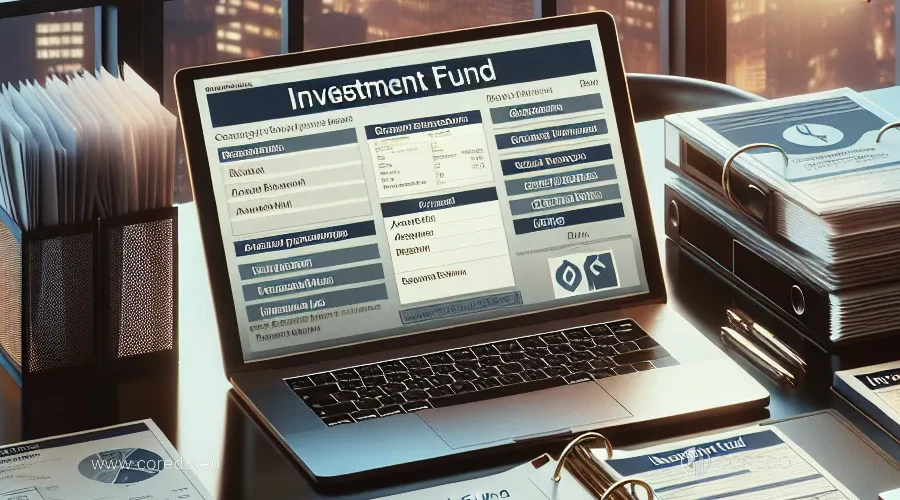Advantages and Limitations of ZISIF §15 for International Business

Why has ZISIF §15 become the choice for many international companies and family offices? In practice, the COREDO team has implemented dozens of projects where the key advantages have been:
- Flexibility in choosing an investment strategy: allowed to invest in a wide range of assets, including securities, real estate, startups, cryptocurrencies, and even unconventional instruments.
- Minimal regulatory barriers: no minimum capital requirements, no mandatory license for a management company (subject to the limit on the number of investors and assets up to 100,000,000 EUR).
- Scalability: the fund structure allows for the attraction of new investors (up to 20 non-qualified or unlimited number of qualified), as well as integration into international holding structures.
- Simplicity of corporate management: founders can use s.r.o. or a joint-stock company, retaining control over the fund and profit distribution.
- Reduced administrative burden: simplified reporting and compliance requirements compared to traditional collective investment funds.
- Investment limit: the total volume of assets should not exceed 100,000,000 EUR.
- Minimum investment threshold for qualified investors: 125,000 EUR.
- Limitations on the number of non-qualified investors: no more than 20.
- No public offer: the fund cannot offer its shares or units to an unlimited number of people.
Comparison of ZISIF §15 and Other Investment Funds (FKI, SICAV, EU and Asia Structures)
Choosing a fund structure is a strategic decision that affects the tax burden, level of compliance, and scalability opportunities. For clarity, I will provide a comparative table:
| Criterion | ZISIF §15 (Czech Republic) | FKI (Czech Republic) | SICAV (EU) | Analogues in Asia |
|---|---|---|---|---|
| Minimum capital | None (or minimal) | 1,250,000 EUR | 1,250,000 EUR | From 100,000 USD |
| Type of investors | Qualified/up to 20 non-qualified | Only qualified | Qualified/public | Depends on jurisdiction |
| Regulator | ČNB | ČNB | EU regulators | Asian country regulators |
| AML/compliance | Simplified requirements | Strict requirements | Strict requirements | Varies |
| Registration timeline | 2-4 months | 3-6 months | 3-6 months | From 1 month |
| Creation cost | From 109,000 CZK | Higher | Higher | Relatively lower |
| Scalability opportunities | Medium | High | High | Medium/high |
Registration of ZISIF §15 Fund in the Czech Republic

Legal and Organizational Requirements for Fund Registration

Registering a fund in the Czech Republic using the ZISIF §15 model begins with choosing the optimal corporate structure. In practice, a limited liability company (s.r.o.) or joint-stock company is most commonly used. This approach ensures management flexibility, transparency of beneficial ownership, and limitation of founder liability.
Key stages:
- Preparation of founding documents, including the charter, internal regulations, andagreements between founders.
- Determination of ownership structure and share distribution, considering the requirements for beneficial ownership and fiduciary management.
- Appointment of a director and, if necessary, an asset management company in the Czech Republic.
- Opening of a corporate account in a Czech or European bank.
Documents for ZISIF §15 Fund Registration and Interaction with the Czech National Bank

To submit an application to the Czech National Bank (ČNB), a comprehensive set of documents is required, including:
- Founding documents (charter, founding agreement).
- A detailed business plan of the investment fund with a description of the investment strategy, target assets, and profitability scenarios for PRIIPs.
- List of founders and beneficiaries with confirmation of sources of funds and ownership structure.
- KID (Key Information Document): a key information document mandatory for PRIIPs Regulation compliance.
- Documents confirming the qualifications of the management company or director.
- Protocol on the issuance of fund shares (in the case of a joint-stock structure) or share distribution (for s.r.o.).
Timeline and Cost of Registration, Process Stages

Process stages:
- Preparation and agreement on the corporate structure (1-2 weeks).
- Collection and processing of documents, preparation of the business plan and KID (2-4 weeks).
- Submission of the application and documents to ČNB, interaction with the regulator (4-8 weeks).
- Obtaining the permit and registration documents, fund launch.
Investment Strategy of ZISIF §15
Investment Strategy Requirements and Permitted Assets
ZISIF §15 provides broad opportunities for crafting an individual investment strategy. The law allows the inclusion in the portfolio of:
- Traditional financial instruments (stocks, bonds, derivatives).
- Real estate and infrastructure projects.
- Startups, venture investments, and innovative companies.
- Cryptocurrencies and digital assets (subject to AML compliance).
- Family and corporate capital, which is particularly relevant for inheritance structuring and family asset management.
Organization of Fund Management and Collective Investments
Asset management in the EU requires not only professional expertise but also strict adherence to fiduciary management standards. In a ZISIF §15 structure, it is possible to appoint an asset management company in the Czech Republic or for the fund director to manage independently. It is essential to ensure process transparency, regular reporting to investors, and compliance with all collective investment requirements in the Czech Republic.
Performance Metrics and ROI: How to Evaluate Fund Results
Evaluating the effectiveness of a fund is built on several key metrics:
- ROI (Return on Investment), a key indicator for investors reflecting investment profitability.
- Profitability scenarios for PRIIPs: modeling various portfolio development scenarios and their impact on final profitability.
- Comparing profitability with similar funds in the EU and Asia, allowing investors to make informed decisions about capital diversification.
Compliance and AML for ZISIF §15
AML and Compliance Procedures: Identification, Screening, Documentation
Adherence to anti-money laundering legislation (AML) and compliance is an integral part of managing any investment fund in the Czech Republic. For ZISIF §15, simplified but mandatory procedures apply:
- Identification and screening of investors, including verification of sources of funds and beneficial ownership.
- Maintaining AML reports for the fund, documentation storage, and regular data updates.
- Preparation and updating of KID (Key Information Document) in accordance with PRIIPs Regulation requirements.
- Implementation of internal policies for income legalization and prevention of terrorism financing.
Reporting, Audit, and Interaction with the Regulator
ZISIF §15 is obliged to maintain regular reporting to the Czech National Bank, including:
- Financial reporting according to established standards.
- Reports on asset movements and investment activities.
- Audit opinions (upon reaching certain asset thresholds).
- Prompt information to the regulator regarding significant changes in the fund structure or investor composition.
Compliance with PRIIPs Regulation and OtherEuropean Requirements
COREDO supports clients at all stages – from initial documentation preparation to fund integration into international tax structures, which is critically important for long-term success.
Exit Strategies and Integration of ZISIF §15
Exit Strategies for Investors and Founders
An investor’s exit from a ZISIF §15 fund can be realized through the sale of a share, buyout of shares by the fund, or transfer of rights to third parties. It is important to pre-determine the mechanisms for share valuation, exit timelines and conditions, as well as tax implications for the investor and the fund.
Scaling the Fund: Attracting New Investors and Expanding Geography
In practice, COREDO has implemented scenarios where a fund, upon reaching the asset limit, transformed into a more complex structure (e.g., FKI) while maintaining management and asset continuity.
Integration of the Fund into International Holding and Tax Structures
ZISIF §15 can be integrated into international holding structures to optimize taxation, protect assets, and increase investment attractiveness. It is important to consider the features of international tax planning, requirements for beneficial ownership, and controlled foreign company (CFC) rules in the investors’ countries of residence.
Conclusions and Recommendations for Business
- Practical Steps for Registration: clear planning, document preparation, and professional support at all stages are the key to successfully launching a fund.
- Legal Support for Investment Funds: COREDO’s experience shows that comprehensive support minimizes risks and accelerates interaction processes with regulators.
- Risk Minimization: implementation of modern compliance and AML solutions, reporting automation, and transparent corporate structure.
- Reliable AML Compliance: regular investor screening, documentation updates, and integration of digital tools.
- Comprehensive business support: from jurisdiction selection to scaling and investor exit.
- Saving Time and Resources: process optimization, reduced administrative burden, and automation of fund management.
- Best Practices in Collective Investment Management: transparency, regular reporting, and flexible investment strategy.
- Innovative Risk Management Approaches: asset diversification, digital solutions, and integration into international structures.